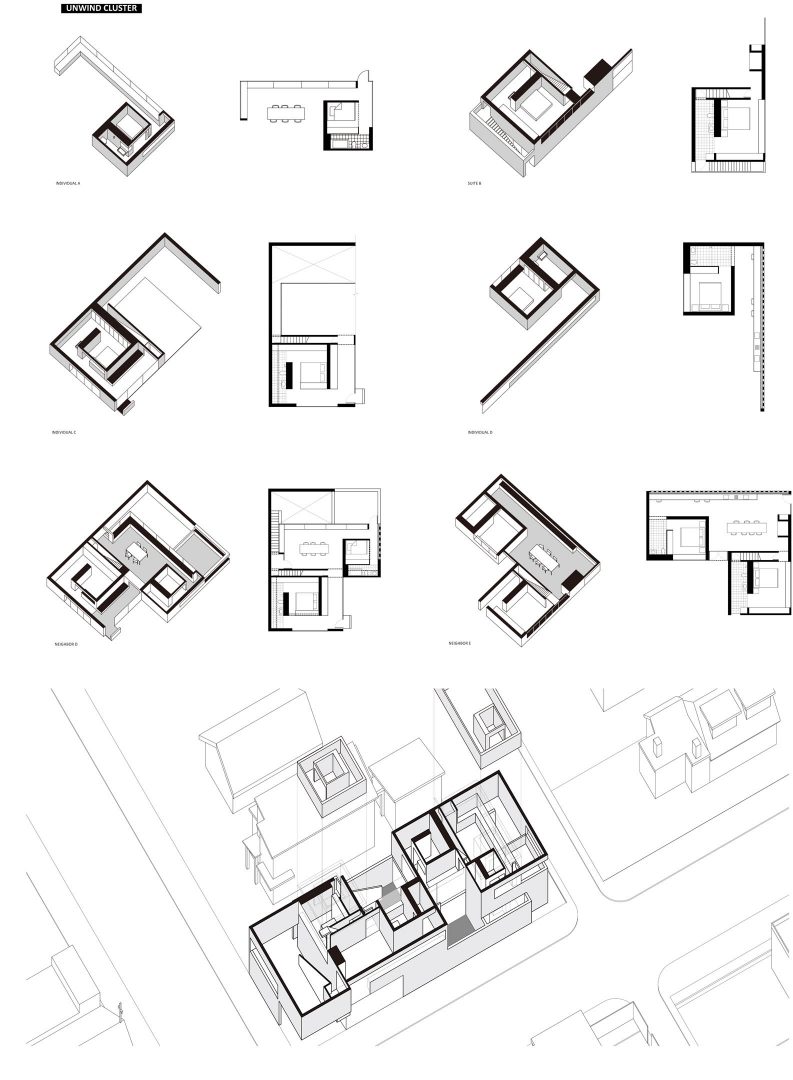ARCH_500-600 Option Studios: ‘Domestic Mutations in the Sharing Economy’
Lawrence Blough, Visiting Professor
“I am concerned with the changing continuous relationship between life style and life space. I am asking, with the communitarian theorist Murray Bookchin, “How does the liberated self emerge that is capable of turning time into life, space into community, and human relationships into the marvelous?”
—Dolores Hayden, “Seven American Utopias: The Architecture of Communitarian Socialism, 1790–1975”
“Tangled, intertwined, it seems to be a city, or rather a fragment of a city. Its inhabitants are immunized because they are both vectors and protectors of this complexity. The multiplicity of its interwoven experiences and forms is matched by the apparent simplicity of its mechanisms.”
—R&Sie(n) Architectes, “I’ve Heard About …”
The “Un-Private House” show at MoMA in 1999 identified alternative models of the domestic brought on by the shifting boundaries between public and private life and the concomitant redefinitions of family, work, and leisure. Many of the changes were attributed to advances in communication and information technologies with the advent of the World Wide Web, marking a collapse between an exterior virtual world and the interior life of the home. In the past few years much has been written about how champions of the 21st-century sharing paradigm have taken this a step further, where the modern internet promises a new form of reengagement with the physical world between individuals and collectives. In The New York Times article “The Millennial Commune,” Ronda Kaysen contends that people have been “pooling resources and talents to create ad hoc communities for generations, and that’s not even taking into account boarding houses and residential hotels.”
In the moment when entrepreneurs have created app-enabled opportunities—from renting a hot desk in common workspaces (The Wing), to dining in stranger’s houses (Feastly), to sharing live/work space for digital nomads (Roam)—collective dwelling and co-production programs are being reimagined to grow unique social and spatial scenarios. Following this line of thinking, the question of how architects envision novel conceptions of private property and communal space in the 21st century becomes the provocation for studio investigation. If the dwelling has always been a preoccupation for architecture’s disciplinary research, then current economic and social trends demand we interrogate the single-family house’s autonomy and contest the habits it has institutionalized in order to spur innovation.
This studio explored contemporary mutations of the house by investigating novel domestic assemblages targeted for the sharing economy—a communitarian organization designed to accommodate transient residents and their accompanying needs, desires, and mechanisms of support. To create a context for their invention, students researched past and emerging co-living models as they relate to California’s alternative cultural scene with proposals ultimately sited in Venice Beach, Los Angeles. Programs such as home sharing, co-living, multi-generational homes, food sharing, and co-working were all investigated as potential trajectories.

Mengru Wang

Mengru Wang

Mengru Wang

Shinyao Li

Samuel Bell-Hart

Samuel Bell-Hart

Samuel Bell-Hart

Sam Bell-Hart